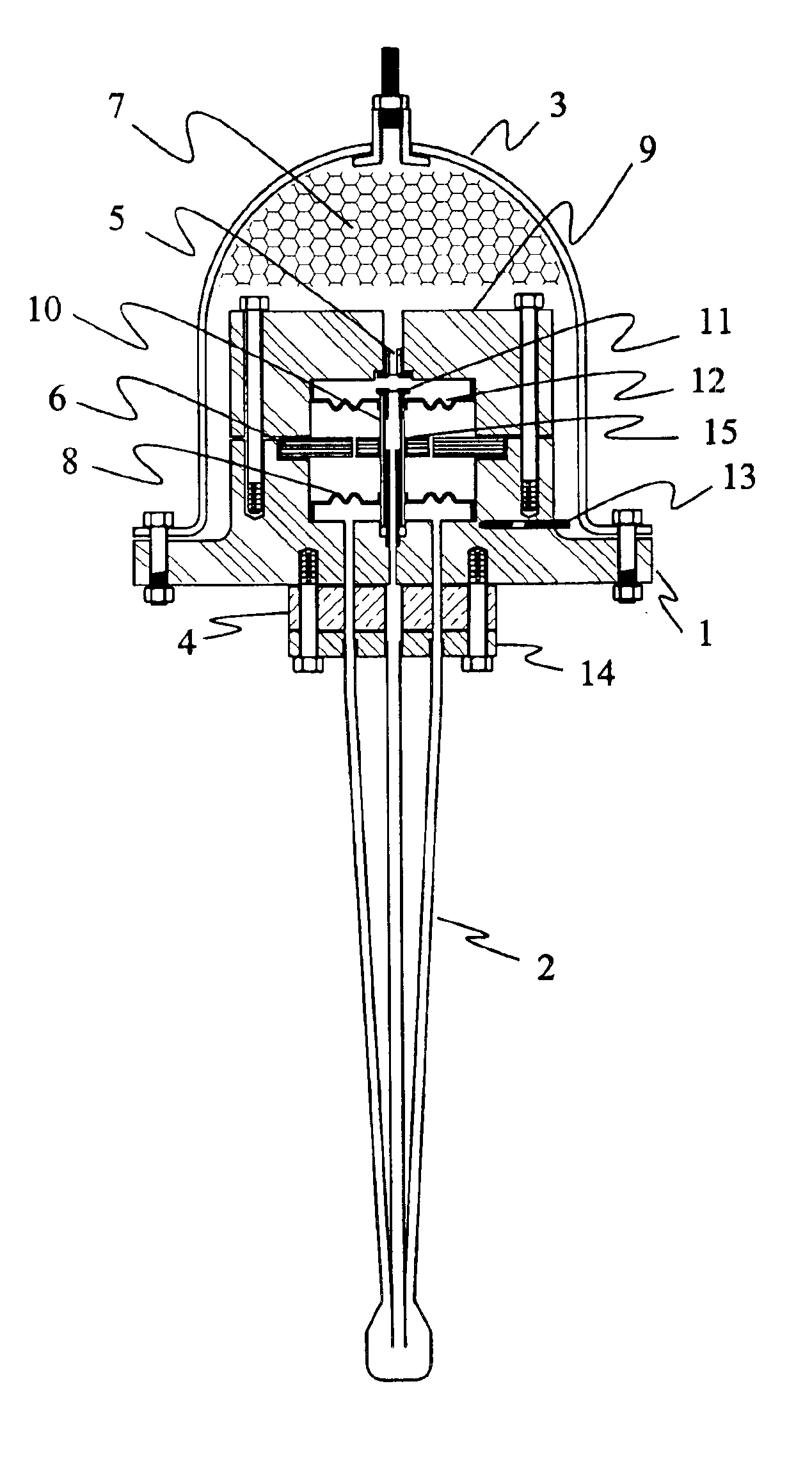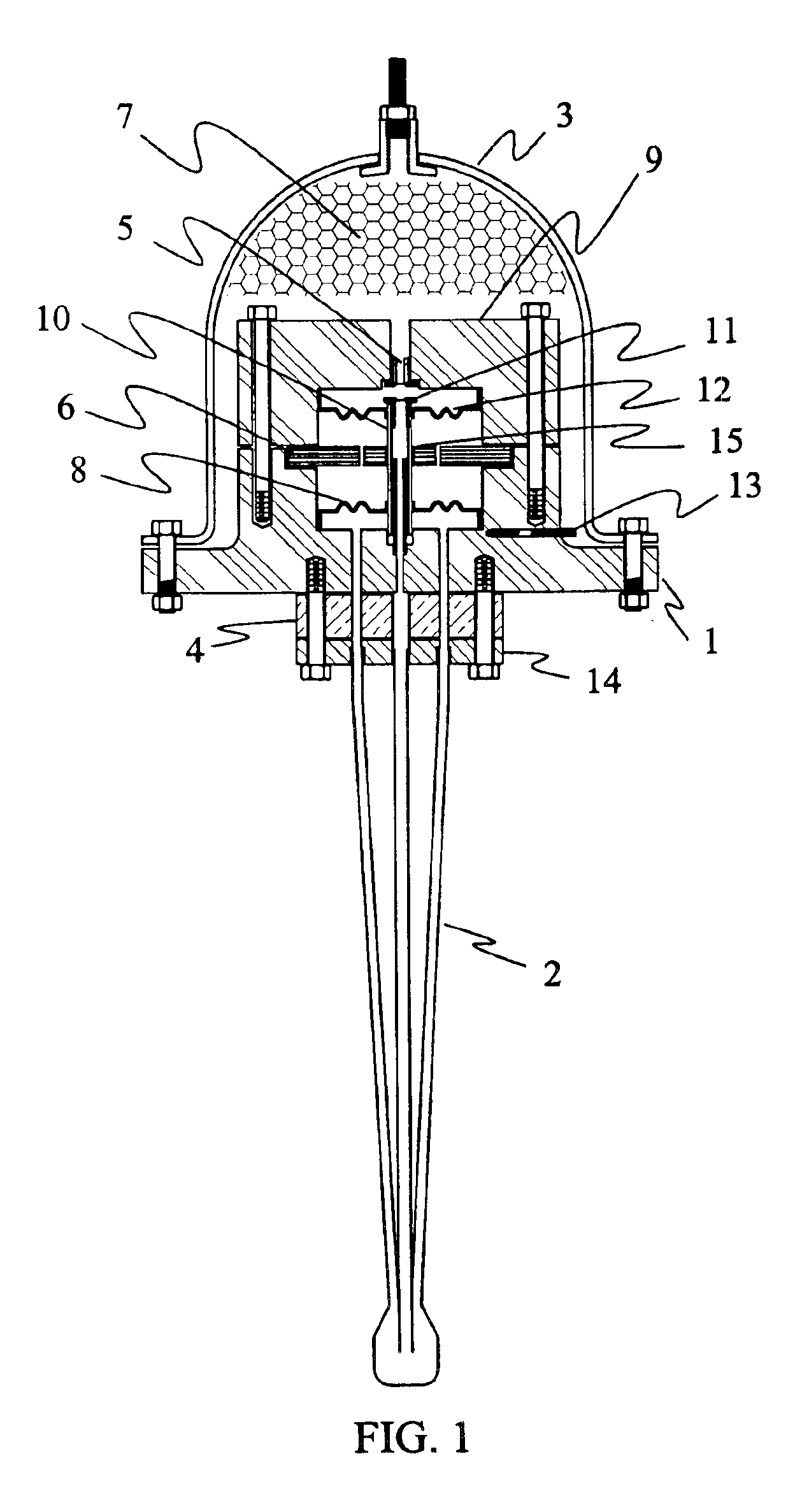Thermoacoustic engine-generator
a generator and engine technology, applied in the direction of generators/motors, machines/engines, lighting and heating apparatus, etc., can solve the problems of limited power output of standing wave systems, large output work, and low power density, so as to reduce short-circuit thermal conduction, minimize thermal losses, and limit the path of energy exchange
- Summary
- Abstract
- Description
- Claims
- Application Information
AI Technical Summary
Benefits of technology
Problems solved by technology
Method used
Image
Examples
Embodiment Construction
[0049]The TAC Engine-Generator will be described with reference to drawings that are not to scale. In the drawing figures, the reference character 2 indicates the component referred to as HX sub h in the specification, and the reference character 7 indicates the component referred to as HX sub c in the specification.
[0050]With respect to FIG. 1; the thermal break 4 is a thermal insulating means, preferably a material such as pressed fiber, ceramic or plastic, although other materials can be used, even metals that are poor conductors of heat. The purpose of the thermal break 4 is to minimize short-circuit thermal conduction between the first heat exchanger-waveguide 2, and the generator housing 1 in order to reduce conductive losses and increase thermal-to-electric conversion efficiency. Maximum efficiency depends upon maintaining the widest possible thermal gradient between the first heat exchanger-waveguide 2 and the second heat exchanger means 7. The first heat exchanger-waveguide...
PUM
 Login to View More
Login to View More Abstract
Description
Claims
Application Information
 Login to View More
Login to View More - R&D
- Intellectual Property
- Life Sciences
- Materials
- Tech Scout
- Unparalleled Data Quality
- Higher Quality Content
- 60% Fewer Hallucinations
Browse by: Latest US Patents, China's latest patents, Technical Efficacy Thesaurus, Application Domain, Technology Topic, Popular Technical Reports.
© 2025 PatSnap. All rights reserved.Legal|Privacy policy|Modern Slavery Act Transparency Statement|Sitemap|About US| Contact US: help@patsnap.com



